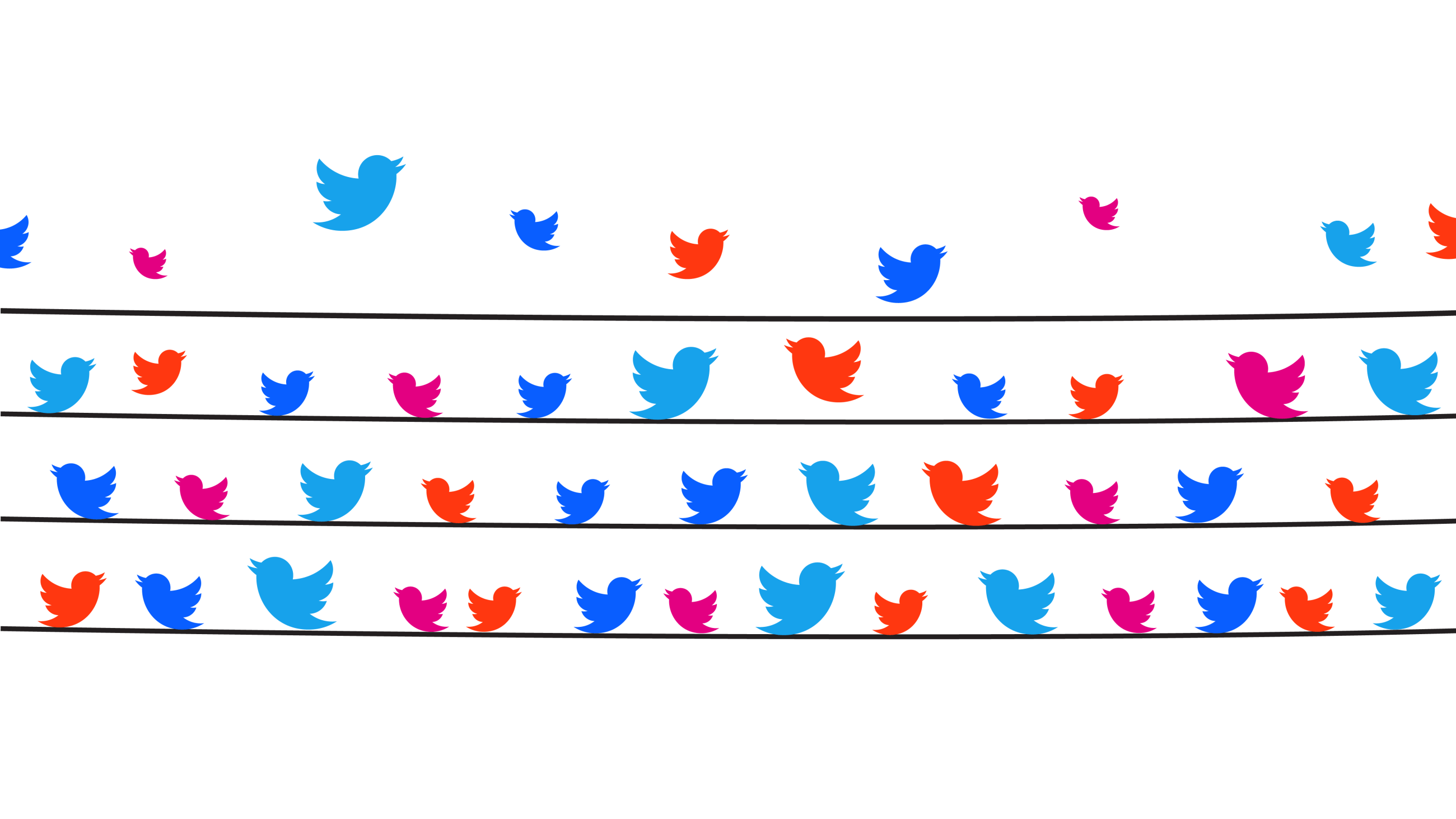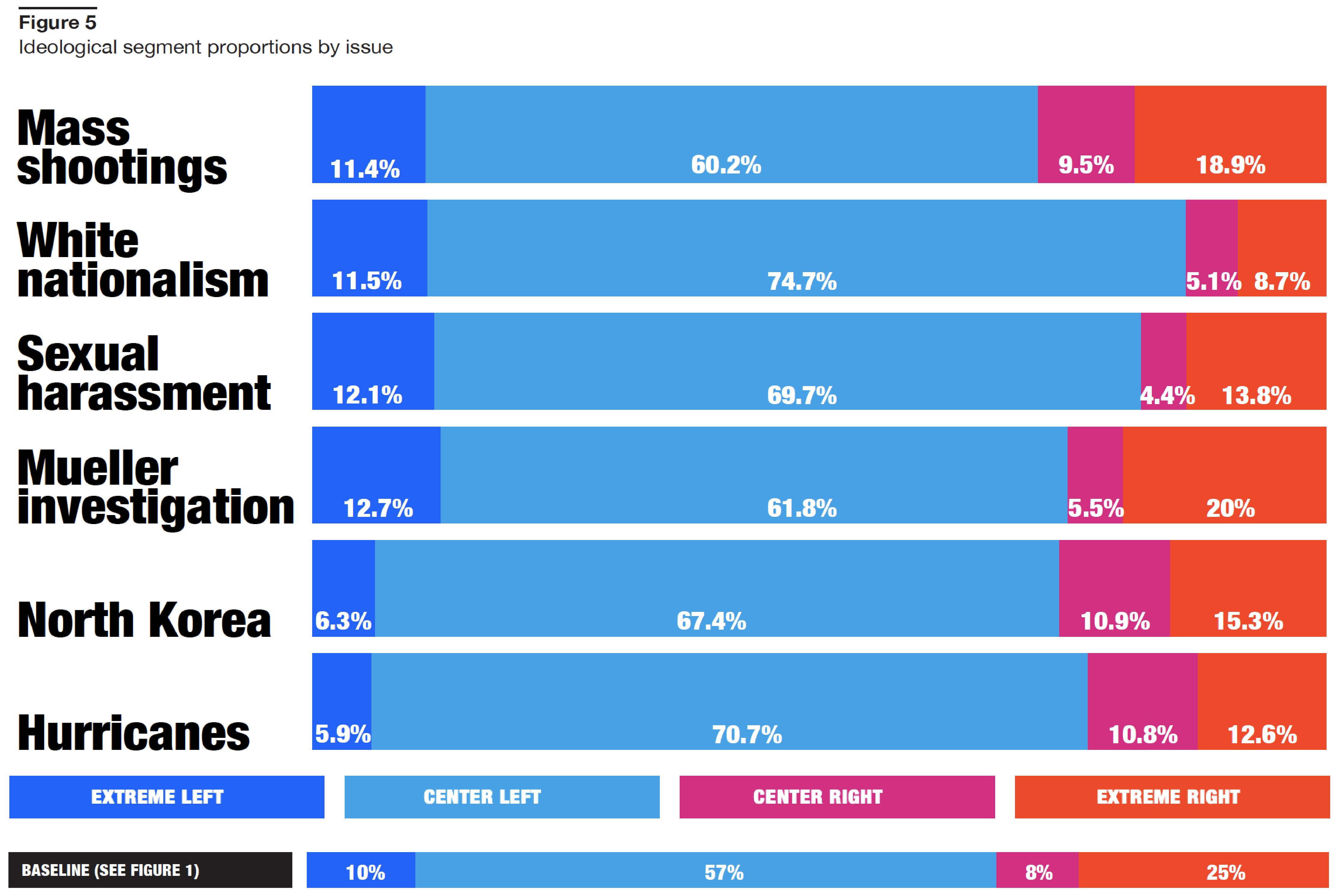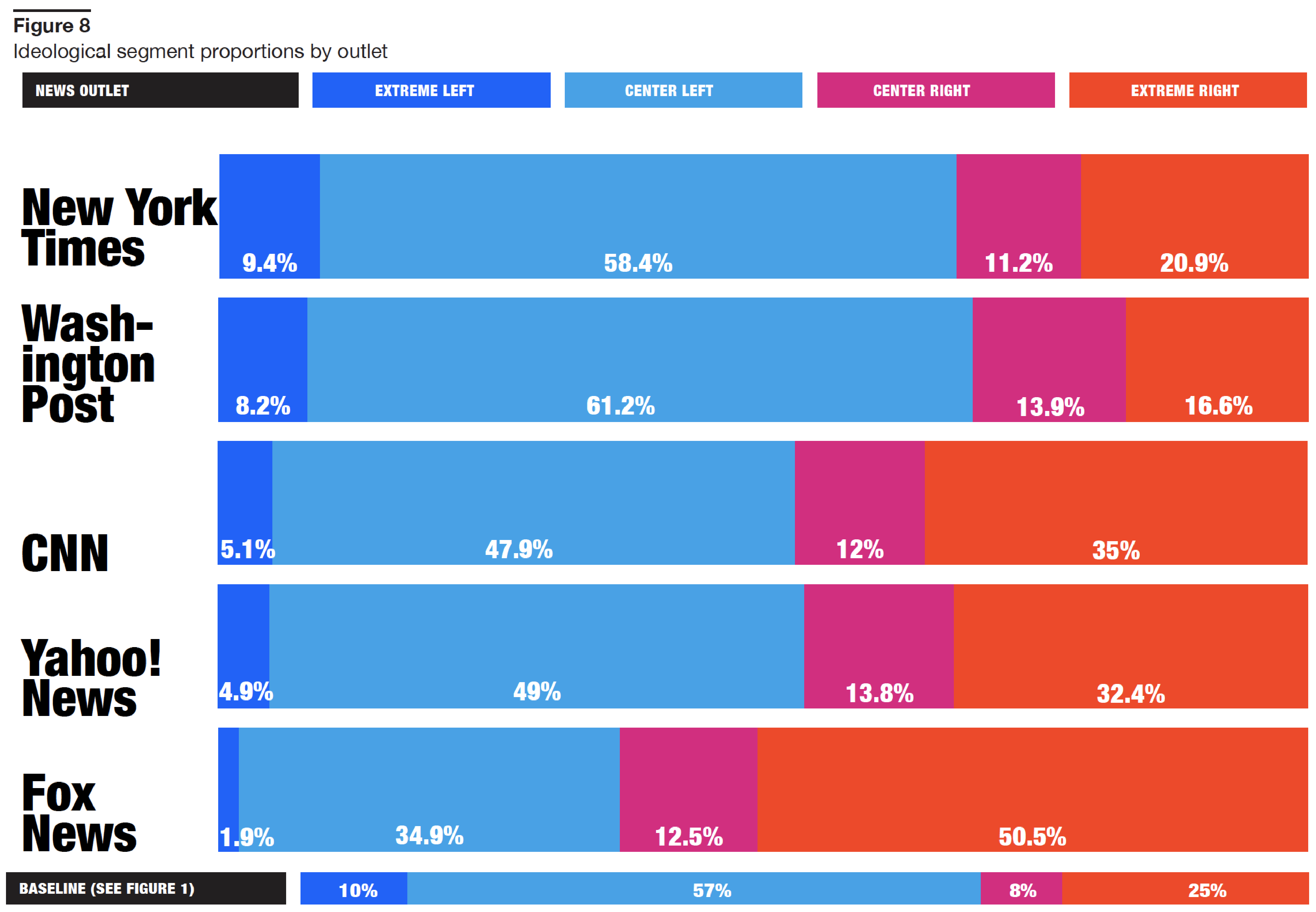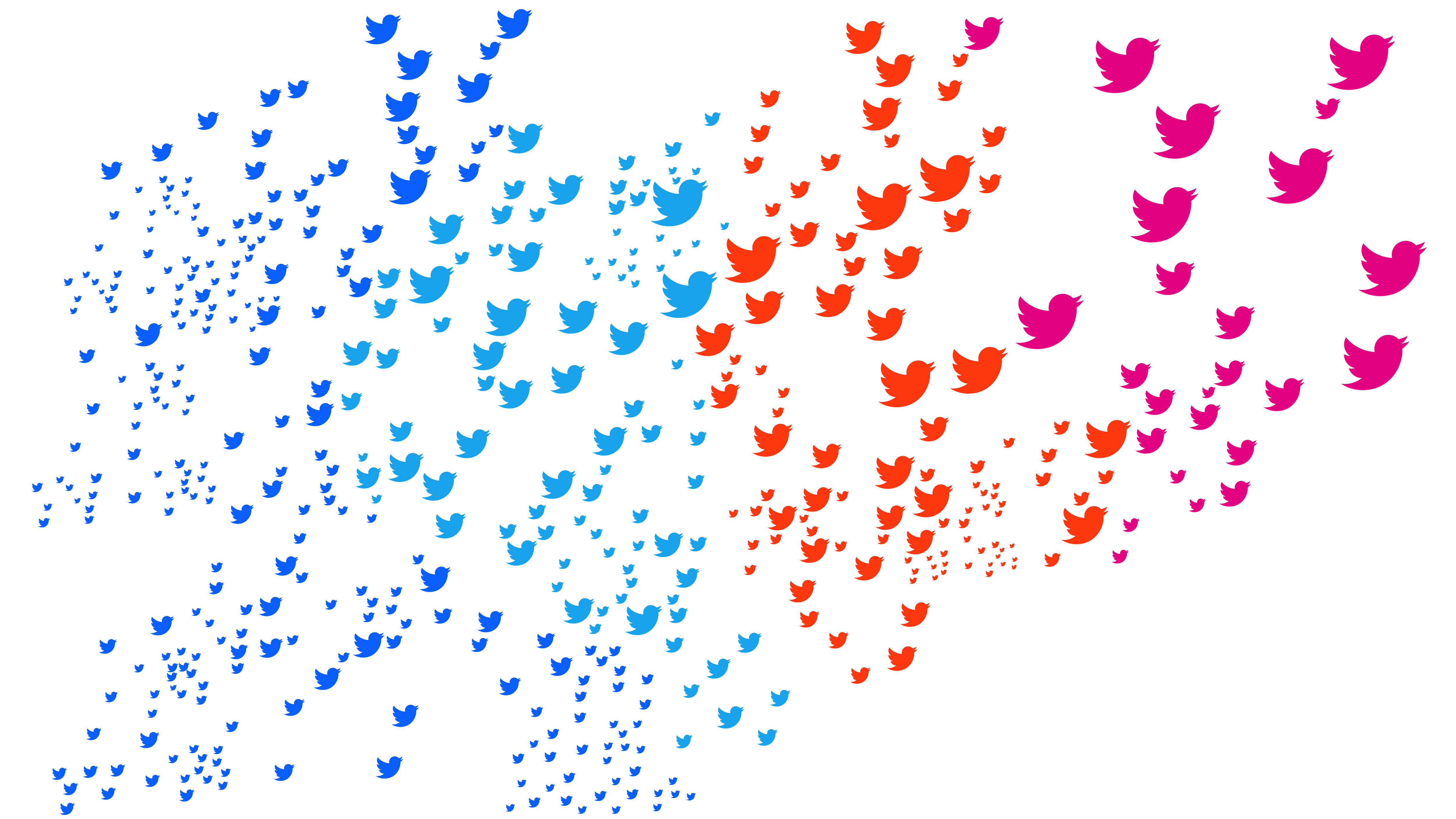
Polarization in the Twittersphere: What 86 million tweets reveal about the political makeup of American Twitter users and how they engage with news
On Dec. 17, 2019, Knight Foundation released a two-part study analyzing the political dynamics of 86 million tweets. Download part one of the study here, download part two of the study here, and read an analysis below from Evette Alexander, Knight Foundation director for learning and impact.
The old adage remains true: birds of a feather flock together, even in the digital skies of social media.
In an effort to better understand the landscape of political news and engagement on Twitter, Knight Foundation commissioned a two-part study — “The Politics of Social Media” — to capture and analyze over 86 million tweets across the political spectrum and better understand journalists’ viewpoint on the role they play in political conversations on the platform.
“This is the first study to map ideological polarization on Twitter based on actual user behavior — in other words what they do, not what they say they do.”
Led by University of North Carolina at Chapel Hill Associate Professor Deen Freelon from the School of Media and Journalism, part one uses an innovative ideological scoring algorithm[1] to categorize users into political segments and explore how these segments behaved in relation to news issues and media outlets. While other studies have used scoring techniques in other capacities, or captured the self-reported political segmentation of Twitter users via survey[2], this is the first study to map ideological polarization on Twitter based on actual user behavior — in other words what they do, not what they say they do.
Here are some revealing findings from the study:
The political spectrum on Twitter skews heavily center left, particularly for trending issues. While some might be tempted to believe that Twitter is a generally accurate representation of American politics, ideology scoring analysis reveals that over half (57%) of Twitter users fall into the center left segment and an additional 10% are in the extreme left category.

The center right is hollowed out, dwarfed by the extreme right. While the center left is the largest segment, the center right is the smallest, accounting for only 8% of users. At 25%, the extreme right is three times its size and the second largest segment on Twitter. This means that Twitter’s conservative representation is dominated by the far right.
The center left is the most vocal segment discussing current political news. Among trending news issues, the center-left segment is even more engaged than other segments, so its views are over-represented in relation to its already large size. This means that most Twitter users, even those with a relatively diverse following, are likely seeing a left-skewed version of politics.

Extreme segments — both right and left — have an information diet influenced by pundits, but the center segments on each side are digesting more mainstream news. Extreme segments are understanding political events from sources known for one-way political spin or heavily biased interpretation of facts, whereas the center segments are more likely to be working from a similar set of fact-based news sources. An analysis of referencing behavior — retweets, mentions and replies — shows that the moderate center right conservatives on Twitter engage with different users than their more extreme counterparts.
Mainstream news outlets attract a more ideologically balanced following than the general Twitter universe. CNN and Yahoo! News are almost equally divided among left and right followers.

News attracts more attacks than it does praise. All segments were more likely to levy insult or criticism at major news outlets, versus offer praise.
“The Twitter landscape for political discourse is dominated by a moderate progressive majority and extreme conservative minority with different news and information diets that have them singing from different song sheets – in short, a recipe for polarized political discussion.”
This study reveals the Twitter landscape for political discourse is dominated by a moderate progressive majority and extreme conservative minority with different news and information diets that have them singing from different song sheets – in short, a recipe for polarized political discussion.
Yet, it is important to recognize that Twitter is a distorted mirror of Americans’ political views. When the progressive majority encounter conservatives on the platform, those conservatives are more likely to hold more extreme political views shaped by politicians and pundits than the general right-leaning electorate. Moderate conservative voices who might share information diets and views closer to their center-left counterparts are largely absent on Twitter. This may shed at least some light as to why political discussions on the platform often feel like a thorny environment for finding common ground.
At a time when many are asking whether social media – long hailed as a new way to democratize political discussion – might in fact be contributing to polarization, this study provides a vital snapshot of actual behavior on a key platform.
Part two of the study – “Public Political Talk on Twitter and Facebook: The View from Journalists” – explores what journalists feel are their roles in political discussions on Twitter. A research team led by Sue Robinson, professor of journalism at the University of Wisconsin-Madison School of Journalism, conducted 42 in-depth interviews with journalists from 37 national or large metro news organizations that are highly active on social platforms in broadcast/cable, radio, online and print. These interviews reveal that most traditional journalists do not aim to decrease polarization, and many are pulling back from the Twitter back-and-forth in favor of more private audience engagement.
“A rising class of engagement specialists… see an active role for the press in fostering improved, less polarized public discourse.”
However, a rising class of journalists known as “engagement specialists” feel differently. They see an active role for the press in fostering improved, less polarized public discourse. Together with their highly engaged readers, viewers or listeners, they are carefully building and tending to online communities that aim to decrease polarization and improve public discourse through intentional and authentic engagement on specific social platforms.
[1] Barbera, 2015
[2] Pew, 2019
Evette Alexander is a director of learning and impact at Knight Foundation. You can follow her on Twitter at @evettewashere.
YOU MAY ALSO BE INTERESTED IN…
-
Information and Society / Report
-
Information and Society / Report
-
Information and Society / Report
Recent Content
-
Journalismarticle ·
-
Journalismarticle ·
-
Journalismarticle ·




